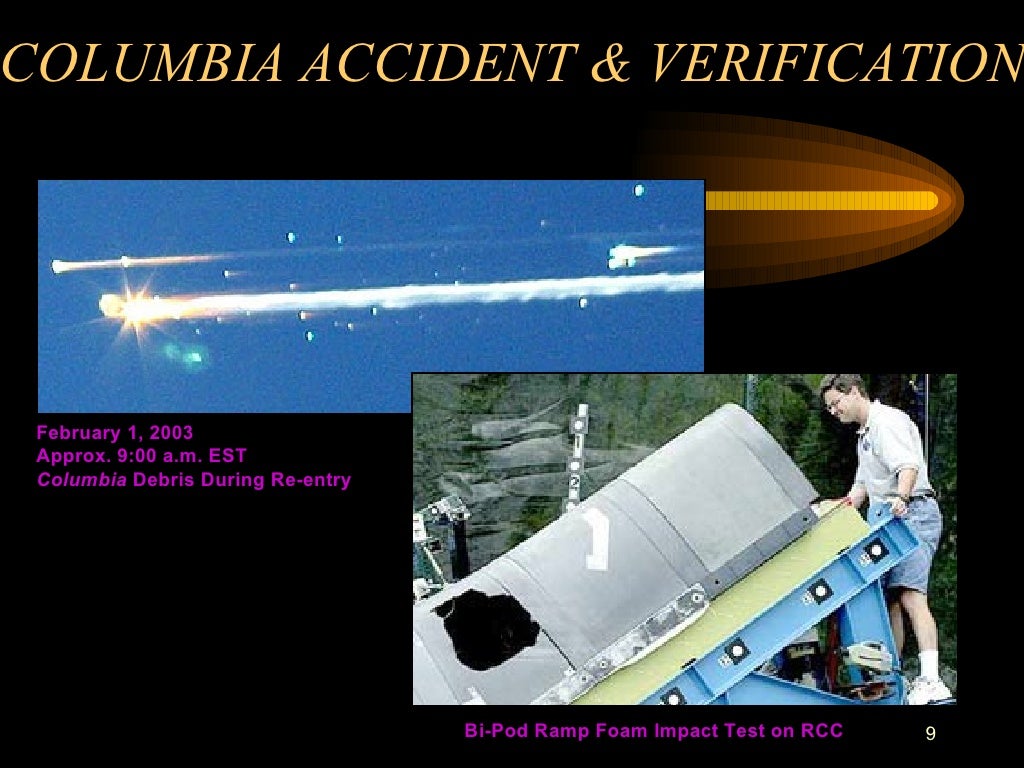

The temperature at launch had been only 10 ☌ (50 ☏), the coldest on record (until January 28, 1986). His investigation found that the first O-ring failed because the low temperatures on the night before the flight had compromised the flexibility of the O-ring, reducing its ability to form a seal. If the second O-ring had failed, the results would almost certainly have been catastrophic with an almost instantaneous explosion of gargantuan proportions, resulting in the complete loss of the shuttle, the crew and the launch pad facilities seemingly the only outcome. He determined that if the O-rings were damaged enough they could fail.

Cold weather made the rubber hard and less flexible, meaning that extrusion took more time and more blow-by took place. These hot gases damaged the rings until the seal was achieved.īoisjoly's investigation showed that the amount of damage to the O-ring depended on the length of time it took for the ring to move out of its groove and make the seal, and that the amount of time depended on the temperature of the rings.

The extruded ring would form a seal in this new position, but during the time it took for the ring to shift, the joint was unsealed and hot gases could escape, a process called blow-by. As the joints flexed, the rings would come out of their grooves and move to a new position in the joint, a process called extrusion. It was found, however, that flight dynamics caused the joints in the SRBs to flex during launch, opening a gap through which rocket exhaust could escape. The rings were supposed to sit in a groove and seal the joint between the sections of the booster. By design, pressure from within the booster was to push a fillet of putty into the joint, forcing the O-ring into its seat. The sections of the boosters were joined using tang and clevis joints and the rings were intended to seal the joint while allowing for the inevitable movement between the sections under flight conditions. The O-rings were two rubber rings that formed a seal between two sections of the SRBs. During his investigation, he discovered that the first of a system of two O-rings had failed completely and that damage had been caused to the second O-ring. This memo followed his investigation of a solid rocket booster (SRB) from a shuttle flight in January 1985. Such a catastrophic event occurred six months later resulting in the Space Shuttle Challenger disaster. ( March 2020) ( Learn how and when to remove this template message)īoisjoly wrote a memo in July 1985 to his superiors concerning the faulty design of the solid rocket boosters that, if left unaddressed, could lead to a catastrophic event during launch of a Space Shuttle. Unsourced material may be challenged and removed. Please help improve this article by adding citations to reliable sources in this section. This section needs additional citations for verification. O-ring safety concerns Simplified cross section of the joints between solid rocket booster segments outside at left.Ī – steel wall 0.5 inches (12.7 mm) thick He later worked for Morton Thiokol, the manufacturer of the solid rocket boosters (SRBs) for the Space Shuttle program. He subsequently worked for companies in California on lunar module life-support systems and the moon vehicle. Career īoisjoly started his career at a used-aircraft company in western Massachusetts, before moving to California for work. īoisjoly studied mechanical engineering at the University of Massachusetts Lowell. He grew up in the neighborhood of Belvedere as the son of a mill worker and one of three brothers. Early life and education īoisjoly was born on April 25, 1938, in the city of Lowell, Massachusetts. He was considered a high-profile whistleblower. Morton Thiokol's managers decided to launch the shuttle despite his warnings, leading to the catastrophic failure. Boisjoly correctly predicted, based on earlier flight data, that the O-rings on the rocket boosters would fail if the shuttle launched in cold weather. He is best known for having raised strenuous objections to the launch of the Space Shuttle Challenger months before the loss of the spacecraft and its crew in January 1986. Roger Mark Boisjoly ( / ˌ b oʊ ʒ ə ˈ l eɪ/ BOH-zhə- LAY, April 25, 1938 – January 6, 2012) was an American mechanical engineer, fluid dynamicist, and an aerodynamicist. Project manager of the solid fuel boosters of the Shuttle Program System


 0 kommentar(er)
0 kommentar(er)
